The Best Plants for Erosion Control Hydroseeding
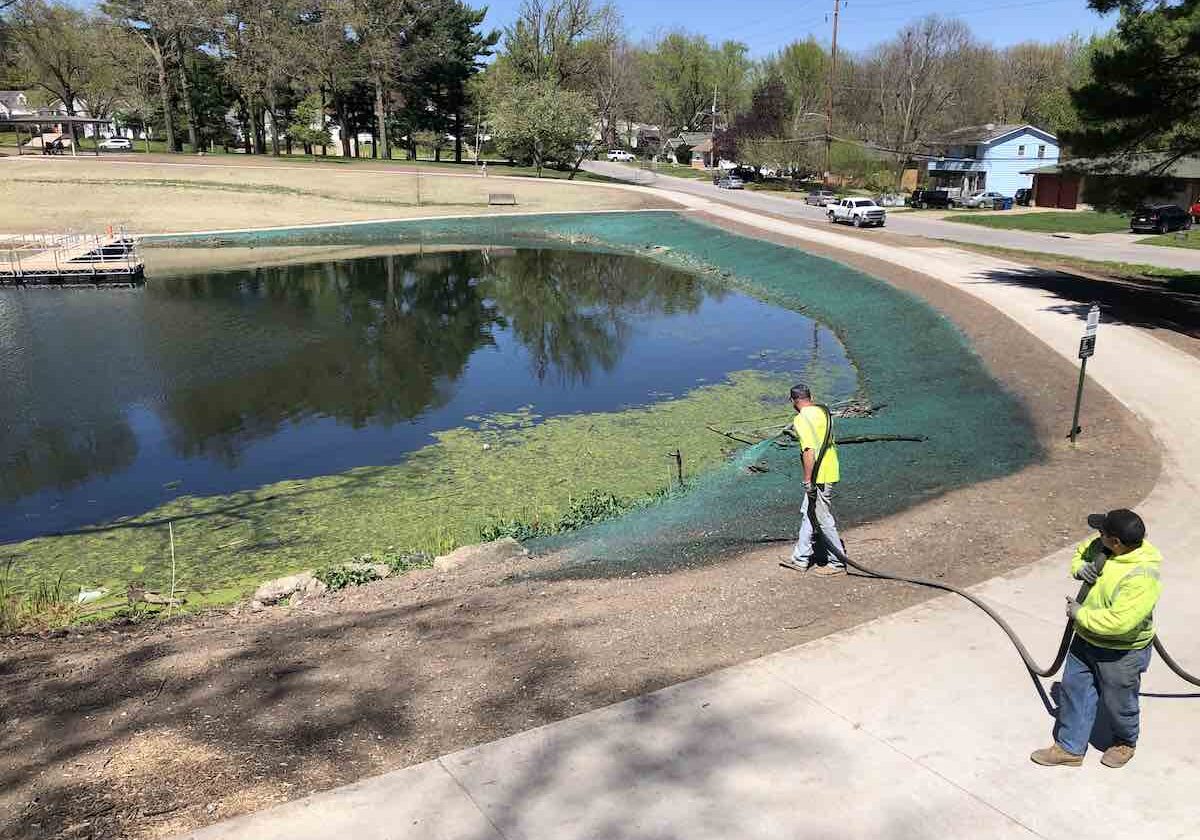
Share this article!
Whether it’s a residential lawn, highway embankment, creekside, or commercial construction project, controlling erosion plays a key role in retaining soil quality and stabilizing an entire area. The process of erosion can remove topsoil from an area, especially areas that are already bare soil or that have been recently disturbed due to environmental or commercial activity.
Losing topsoil in this way translates to poorer soil quality overall, as well as a diminished ability for the soil to retain water and manage how that water moves through the area. Over time, this process can reshape entire hillsides and damage whole ecosystems as the effects are far reaching and interconnected through waterways and wind patterns.
Erosion control is a priority for protecting large areas of earth that have been disturbed, and especially areas like hillsides, steep embankments, and slopes of all kinds. Using plants for erosion control can be a natural and reliable method to prevent erosion and its long-term impact.
How do Plants Help in Erosion Control?
Plants help control erosion and reduce runoff in two crucial ways:
First, the plant’s root systems reach deep into the soil and serve as an attachment point, binding the soil to itself and the roots. Depending on the plant type, roots can be especially deep and prolific, supercharging this effect.
Secondly, plants help disperse rainfall naturally, as their leaves and stalks interrupt rainfall or irrigation as it falls to the ground. This creates a more nuanced water pattern which slows the water’s absorption into the soil and moderates soil saturation.
Water Erosion
Water erosion is the process of rainwater or runoff water carrying topsoil and important nutrients away from the area to locations downstream. As one of the primary contributors to erosion, water erosion can impact just about any area as a result of poorly-planned irrigation, heavy rainfall, or snowmelt.
Any disturbed land exposed to water can suffer from water erosion, though the most common cause of water erosion is typically rainfall because of its unexpected and unpredictable nature. Water erosion can dramatically reshape a hillside or landscape, leading to degraded soil, flooding, and increased sediment in surrounding waterways which can cause their own set of challenges. Plants help slow and prevent water erosion because their root systems absorb water, and their plant structures physically retain moisture as well.
Wind Erosion
Wind erosion occurs when an area with disturbed or mostly barren dirt experiences soil degradation because the wind can easily blow nutrient-rich topsoil away. This effect occurs most often in climates that are already dry or dusty to begin with — ecosystems like deserts, coastlines, and plains.
While some wind erosion is the result of large amounts of heavy winds, like a storm system or hurricane, often and more pervasively, light winds also cause damage because of their sustained nature. Different kinds of plants can help with wind erosion, because, similar to water erosion, plant roots help anchor the soil in place, while plant structures reduce the moving air’s access to soil.
Slope or Hillside Erosion
Slope or hillside erosion occurs when the topsoil of an embankment is redistributed downstream. Hillside erosion can occur as a result of water erosion, wind erosion, or a combination of both. This type of erosion is more prevalent on hillsides that have been disturbed through either agricultural or construction activities and left as bare dirt or mostly bare dirt exposed to the elements.
Slope erosion can not only pollute waterways with added sediment, it also has the potential to destabilize entire hillsides and banks, as water and wind work together to reshape the landscape. Again, plants can play a pivotal role in reducing the amount and severity of slope erosion. Cover crops, shrubs, and grasses can all slow the process of water erosion and help prevent the most disruptive effects of wind erosion.
Why Use Hydroseeding for Erosion Control?
Healthy soil that can withstand the natural forces of erosion relies on just the right combination of water, air, minerals, and organic matter, such as plants or material that used to be plants (e.g. straw). In order to support this healthy, balanced combination of forces, plants are one of the best ways to control erosion. Plants naturally help support the balance soil needs to thrive, while root systems stabilize the soil and the plant structure itself disperses rainfall and moderates the effects of water erosion.
Especially when large areas of land are disturbed, it’s important to address erosion before it creates significant, long-term environmental problems. In order to do this, using hydroseeding for erosion control can be a powerful tool to establish plant growth quickly and effectively. Hydroseeding applies a combination of plant seeds, fertilizers, water, mulch, and tackifiers, which help to hold everything in place while plants germinate and establish.
Selecting Plants for Erosion Control Hydroseeding
When using hydroseeding for erosion control, there are certain crops and plants that better lend themselves to a large-scale broadcast seeding method like hydroseeding. There are also specific plant varieties that thrive in certain areas, like hillsides, where land is commonly disturbed for commercial or agricultural purposes.
When choosing the seed varieties, it’s important to consider where you’ll be planting, what the soil composition and climate is like, and how the selected seeds will fare in the specific conditions.
Considerations
Generally, the same considerations for traditional planting apply when choosing plants for erosion control hydroseeding. It’s important to visit the site and understand factors such as:
- USDA zones,
- average temperatures,
- soil conditions,
- sun exposure,
- humidity,
- average rainfall,
- shade and drought tolerance,
- freeze/thaw cycles,
- as well as different types of soil erosion to consider when selecting plants.
For example, matching a drought-tolerant plant type to a drier area generally means plants will germinate more quickly and be able to establish well. Wherever hydroseeding is planned, the seed type(s) should be a match with the USDA zones so the appropriate environmental factors can be accounted for.
Plant Types
There are many seed mixes that are both erosion control and hydroseeding specific, and these can be great choices for a variety of areas. These mixes generally contain grass seed varieties like prairie grasses or sedges that are relatively low maintenance but have extensive root systems that can also establish quickly.
Wildflower mixes can also be hydroseeded successfully, especially when the area is well matched to the type of wildflower seeds.
Native Plant Species for Erosion Control
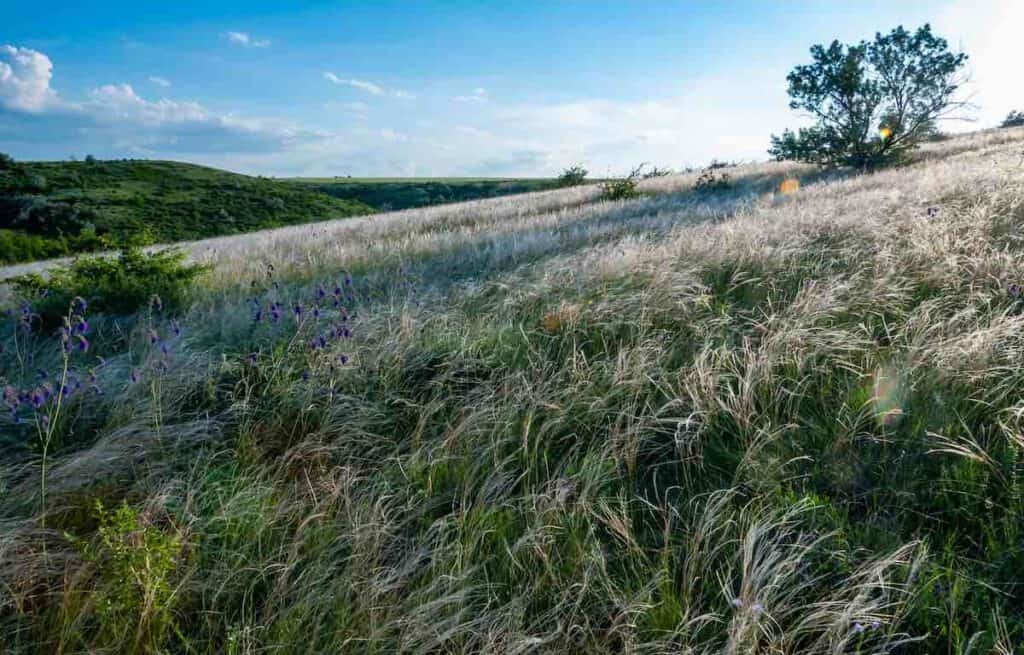
Native plants are often the most successful at providing erosion control because they’re naturally acclimated to the environment and can thrive in its naturally variable conditions. While there are some plants that can be almost universally successful, native plants typically provide the most dependable, lowest maintenance choice for controlling erosion.
Native erosion control plant species vary by region and climate zone. Plants like bunchgrass, dune grass, lupine, or sorrel can thrive in the Pacific Northwest, while buffalo wheatgrass or western wheatgrass are better suited for the climates of the American southwest.
Ground Cover Plants for Erosion Control
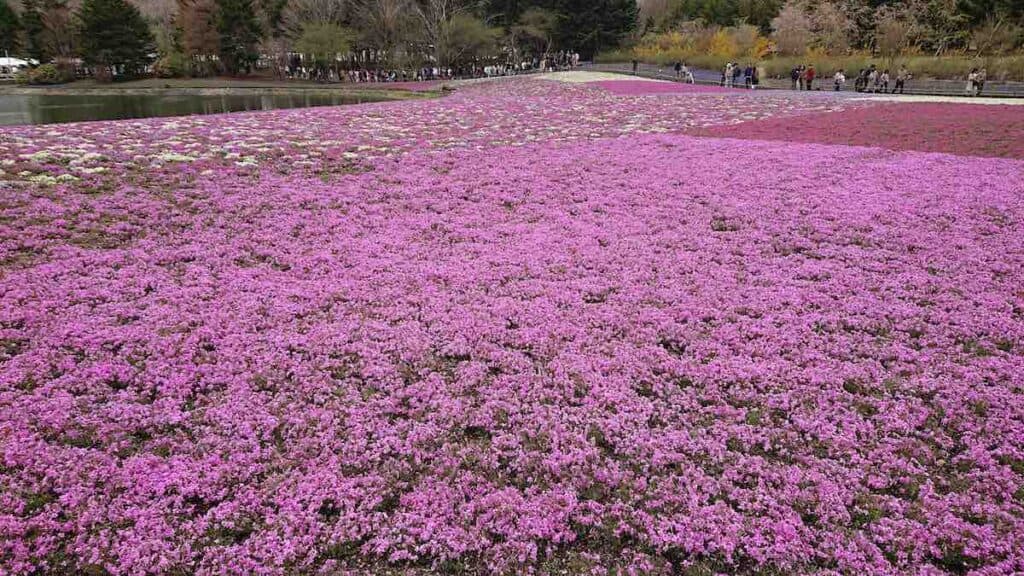
Ground cover plant species can provide bank stabilization and help control erosion in areas that can be hard for other plants to establish in. Depending on the area and soil conditions, ground cover plants like periwinkle, cotoneaster, sedge, creeping phlox, and Russian sage can all contribute an extensive root system to help soil stay in place.
Grasses for Erosion Control
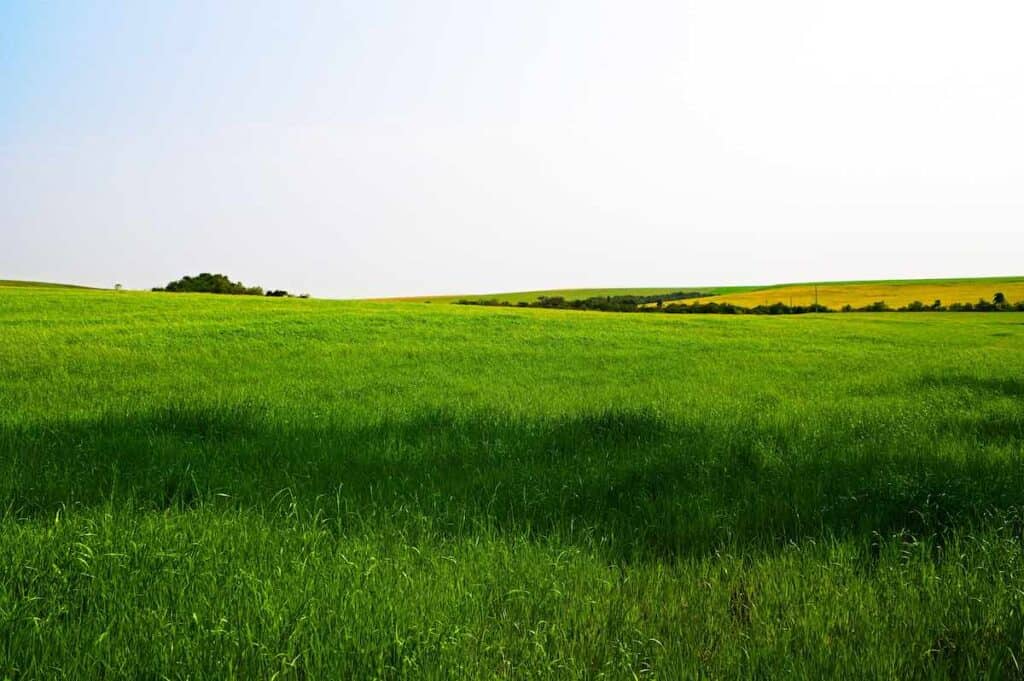
Grasses are also an effective plant choice to prevent erosion. Varieties like ryegrass and fountain grass are known for their dense root systems and ability to thrive in a range of temperatures and soil types, giving them a desirable hardiness and versatility.
Best Plants for Erosion Control by Erosion Type
In addition to the climate zone and soil composition, it’s also important to consider what type of erosion needs to be controlled. In areas where sheet erosion or wind erosion are more concerning, the best plant match may vary.
Best Plants for Erosion Control on Slopes
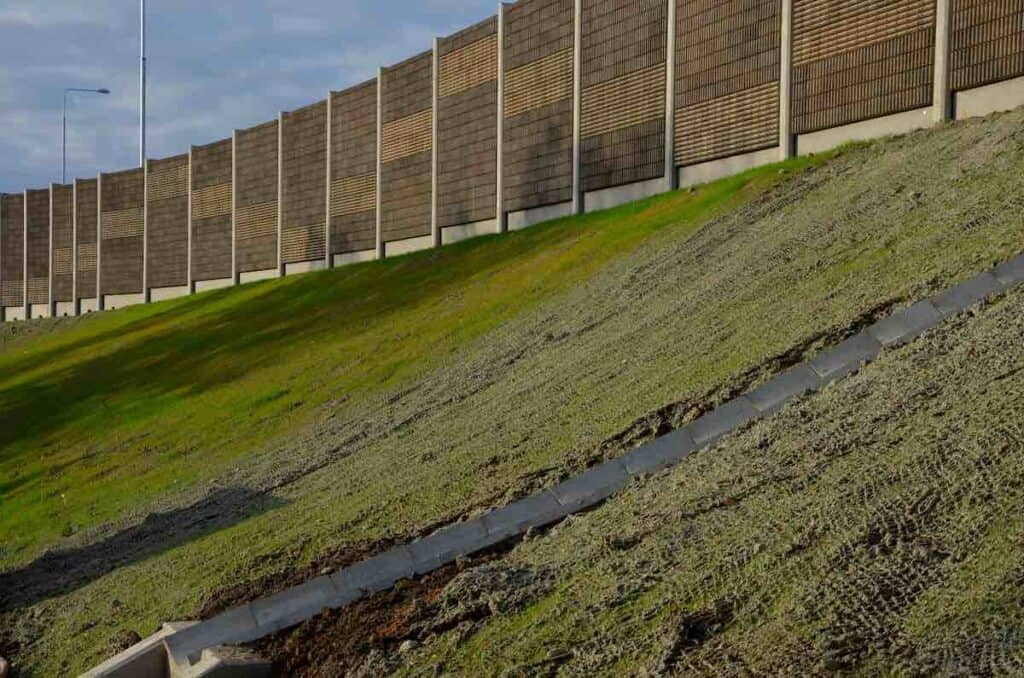
To manage and control erosion on steep slopes, fast-germinating and establishing plant species are the best possible choice. Seeds need to be able to get roots down quickly before erosive forces can wash or blow away more topsoil, or the seeds themselves. Hydroseeding for erosion control on steep slopes helps support quick, effective plant germination because seeds arrive on the ground with everything they need to thrive: water, fertilizers to germinate, and mulch and tackifiers to help seeds stay in place while they grow.
The best plant choices for steep slopes are native plant varieties that can root along their stems, creating a robust root system that forms its own mat-like structure underground. Most ground cover plants and grasses can establish on even the steepest slope as a result. Some varieties of spreading shrubs can also be effective, especially if they’re native to the area.
Best Plants for Runoff Erosion Control
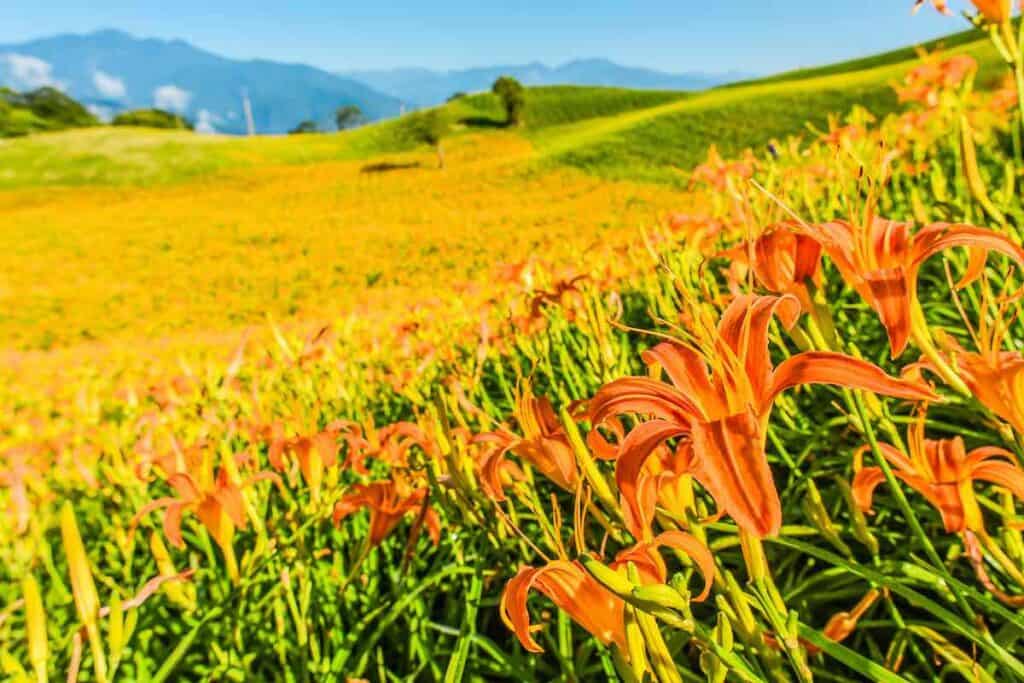
Stormwater runoff erosion can move large quantities of soil. The good news is there are a variety of plants that are effective at helping prevent this type of runoff erosion. Plants that absorb a lot of water are generally the best choices, as they help reduce the amount of runoff by trapping water in the soil.
Trees, shrubs and flowers can all help, specifically, species like white cedars, red maple, and ash trees. Bushes like elderberry and chokeberry retain water in their root systems, and plants like day lily and bee balm can provide similar water-retention but with a lower profile. The best plants for runoff control and erosion will always be those that are native to the specific area, however, so it’s best to ask a landscaper or botanist which variety of plants, trees, or shrubs would best suit your climate zone and soil profile.
Conclusion
The best plants for erosion control hydroseeding are those that are chosen well for the area so they can thrive in their environment and provide long-term erosion control. Hydroseeding simplifies and expedites this process so large areas can be stabilized more quickly, from large residential lawns to golf courses or construction sites. To learn more about hydroseeding for specific projects, visit our Resources Center, or let us know your questions, here.
